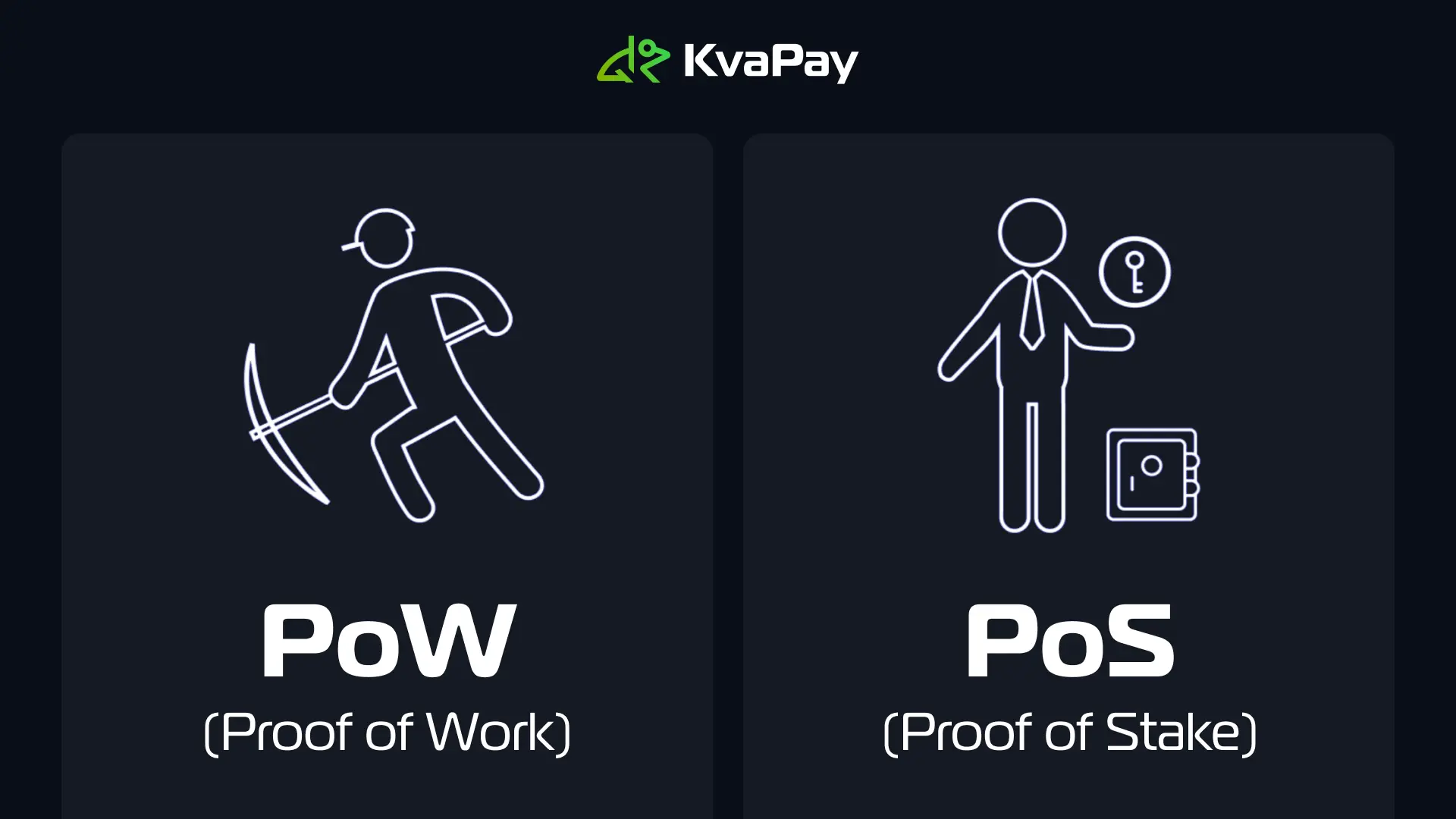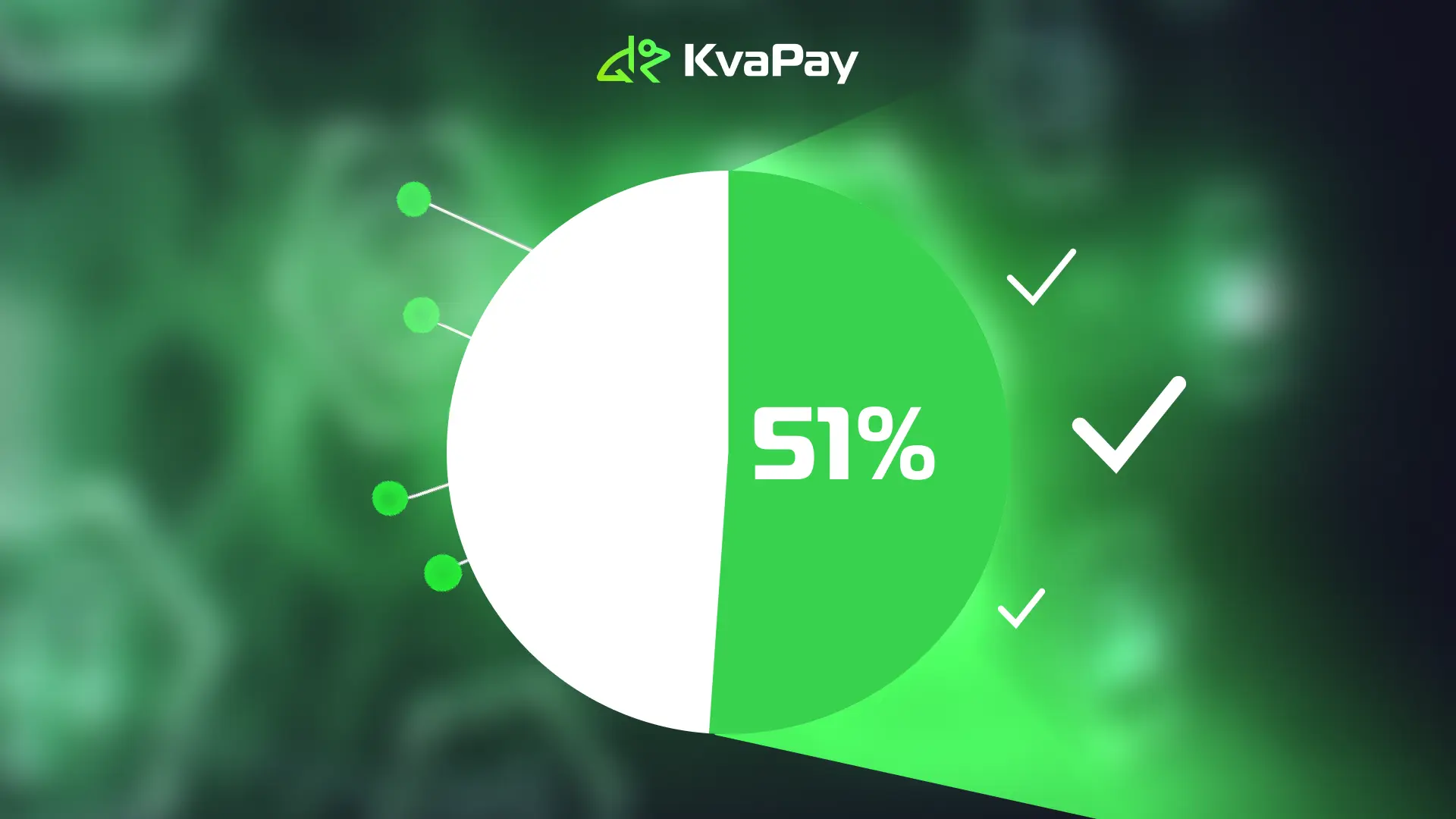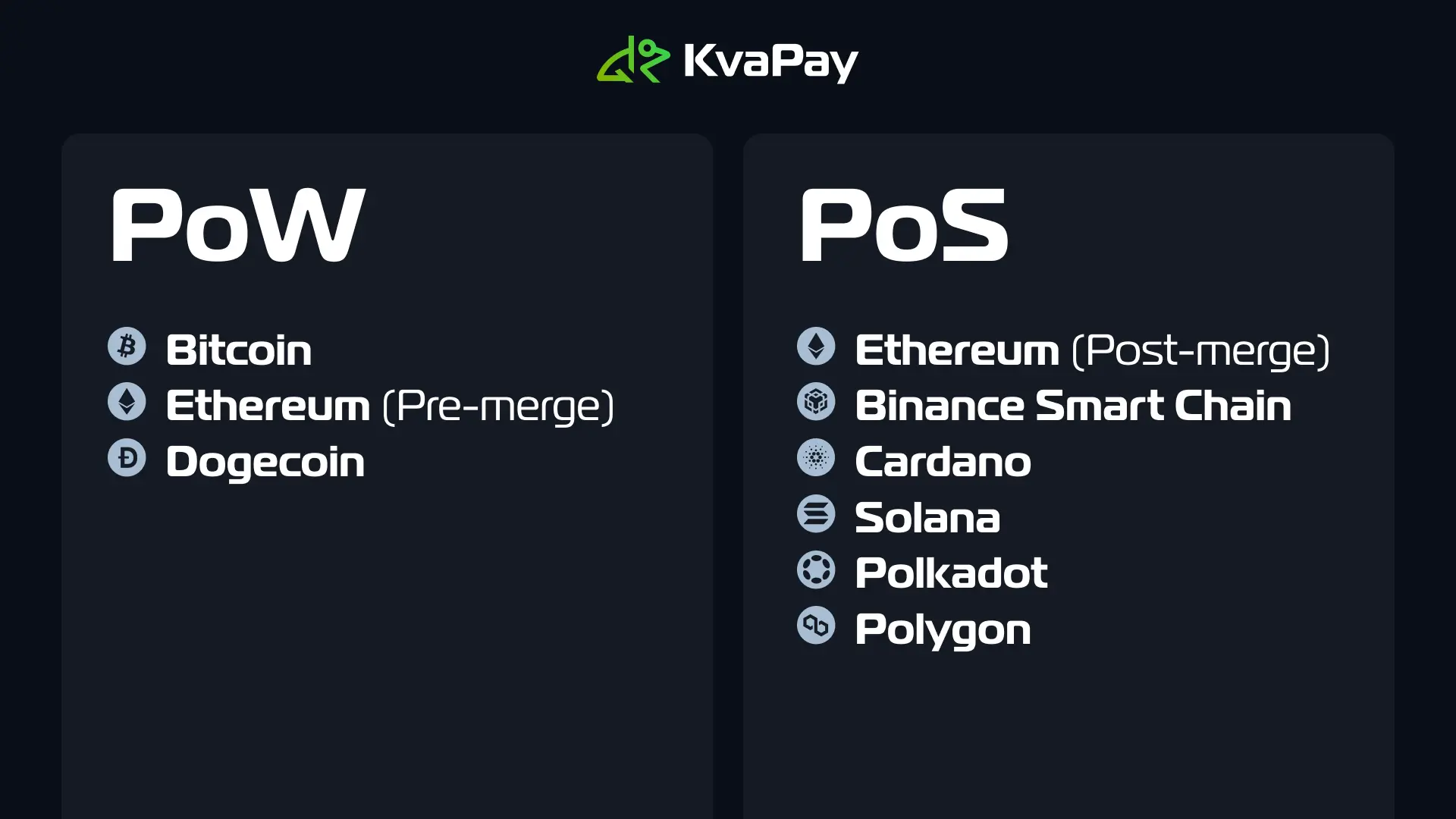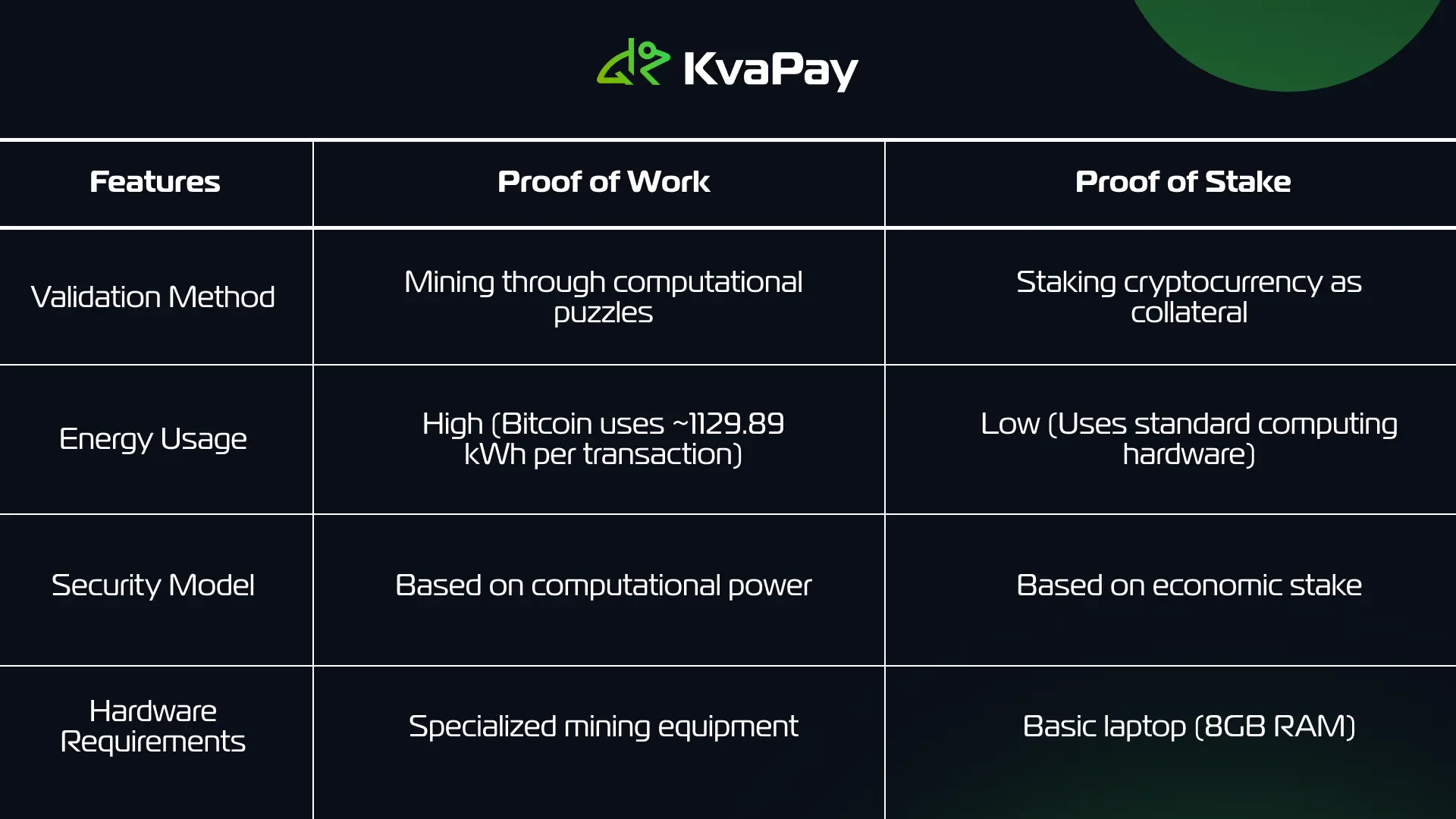Blockchain technology: How do different consensus mechanisms work?
05 April 2025
5 min for read

While Proof of Work networks like Bitcoin offer robust security, they face significant challenges in transaction speeds and energy efficiency. In fact, newer Proof of Stake networks can process transactions faster while using substantially less energy. We've seen this shift most notably with Ethereum's transition from PoW to PoS, which aimed to enhance scalability and reduce environmental impact.
In this guide, we'll explore how different consensus mechanisms work, their real-world applications, and why they matter for the future of blockchain technology. We'll break down the technical aspects, compare their efficiency, and help you understand which mechanism might be better suited for various blockchain applications.
What is blockchain consensus and why does it matter?
Consensus mechanisms serve as the backbone of blockchain networks, acting as protocols that enable distributed computers to reach agreement on the ledger's state. These mechanisms replace traditional human verifiers with automated systems that ensure data integrity across the entire network.
A consensus mechanism's primary function is to maintain consistency and security in blockchain operations. Accordingly, these protocols ensure that all nodes in the network agree on the validity and order of transactions, preventing issues like double-spending and maintaining a single, consistent ledger without central authority.
The security implications of consensus mechanisms are substantial. Furthermore, at least 51% of network participants must agree to validate transactions, creating a robust defense against fraud and manipulation. This threshold requirement specifically helps maintain the network's integrity while promoting decentralization.

Consensus mechanisms offer three key benefits for blockchain networks:
- They create trust in trustless environments through automated verification
- They protect against malicious activities and cyber-attacks
- They ensure network-wide agreement on transaction validity
Consequently, these mechanisms play a vital role in blockchain security by implementing cryptographic techniques and distributed validation. The process involves nodes independently verifying transactions and reaching agreement through predetermined rules, therefore eliminating the need for intermediaries or central authorities.

The choice of consensus mechanism significantly impacts a blockchain's performance, security, and scalability. Different blockchain platforms employ various algorithms, each with unique trade-offs between these factors. Understanding these mechanisms becomes crucial as blockchain technology continues to evolve and find new applications across industries.
Understanding Proof of Work vs Proof of Stake
Proof of Work (PoW) and Proof of Stake (PoS) represent two distinct approaches to blockchain validation. PoW, pioneered by Bitcoin, requires miners to solve complex mathematical puzzles, demanding substantial computational power. Alternatively, PoS selects validators based on the amount of cryptocurrency they're willing to lock as collateral.

The energy implications between these mechanisms are striking. Bitcoin's PoW network consumes more power than entire nations, including Ukraine and Norway. In contrast, PoS systems operate with minimal energy requirements - Ethereum's transition to PoS reduced its energy consumption by 99.84%.
Here's how these mechanisms differ in practice:

Essentially, PoS addresses PoW's primary challenges by eliminating the need for energy-intensive mining. Moreover, PoS networks can process transactions faster - Bitcoin manages about 3 - 7 transactions per second, primarily due to its PoW mechanism (excluding Layer 2 Lightning Network), whereas PoS networks like Cardano’s Hydra update aim to reach up to 1,000,000 transactions per second under optimal conditions, though real-world performance is still evolving

The security aspects also differ substantially. PoW secures networks through computational competition, making attacks expensive and impractical. Similarly, PoS maintains security through economic incentives. Validators risk losing their staked assets if they attempt to validate fraudulent transactions.
It’s also important to note that Bitcoin continues to use Proof of Work primarily for its unmatched security and decentralization, which many in the blockchain community still consider critical for a truly trustless system.
Real-world applications of consensus mechanisms
Consensus mechanisms have found their way into diverse industry applications, primarily transforming how businesses and organizations handle data and transactions. Currently, decentralized finance (DeFi) leads the adoption, enabling peer-to-peer financial systems that operate without traditional intermediaries.
The public sector has particularly benefited from these mechanisms, as government institutions use blockchain to enhance accountability and reduce operational costs. Additionally, healthcare organizations have implemented consensus-based systems for secure medical data management and supply tracking.
Here's how different sectors utilize consensus mechanisms:
| Industry | Application | Key Benefit |
|---|---|---|
| Finance | DeFi Platforms | Peer-to-peer transactions |
| Healthcare | Medical Records | Secure data management |
| Supply Chain | Asset Tracking | Enhanced transparency |
| Real Estate | Property Records | Fractional ownership |
| Insurance | Claims Processing | Faster settlements |
Supply chain management has seen substantial improvements through blockchain implementation. These systems facilitate accurate asset tracking and provide transparency from sourcing to consumption. The retail and luxury sectors use consensus mechanisms to combat counterfeit products and enhance supply chain operations.
The insurance industry has addressed fraud prevention through blockchain-based solutions, with claims processing time significantly reduced. Legal firms have reported a 9.8% increase in productivity after implementing blockchain solutions. The media and entertainment sector has utilized these mechanisms to protect digital content, addressing piracy issues that cost approximately EUR 67.75 billion annually.
Conclusion
Blockchain consensus mechanisms continue to shape the future of decentralized systems, with each approach offering distinct advantages. Proof of Stake has emerged as an energy-efficient alternative to traditional Proof of Work systems, reducing power consumption while maintaining robust security protocols. This shift reflects the broader evolution of blockchain technology, as evidenced by Ethereum's successful transition and its 99.84% reduction in energy usage.
Real-world applications across finance, healthcare, and supply chain sectors demonstrate the practical value of these consensus mechanisms. Organizations implementing blockchain solutions report significant improvements in operational efficiency, with legal firms seeing nearly 10% productivity gains and insurance companies achieving faster claim settlements.
The choice between PoW and PoS depends largely on specific use cases and requirements. While Bitcoin's PoW mechanism provides unmatched security through computational power, PoS networks offer superior transaction speeds and energy efficiency. This balance between security, efficiency, and scalability will likely drive future innovations in consensus mechanisms.
